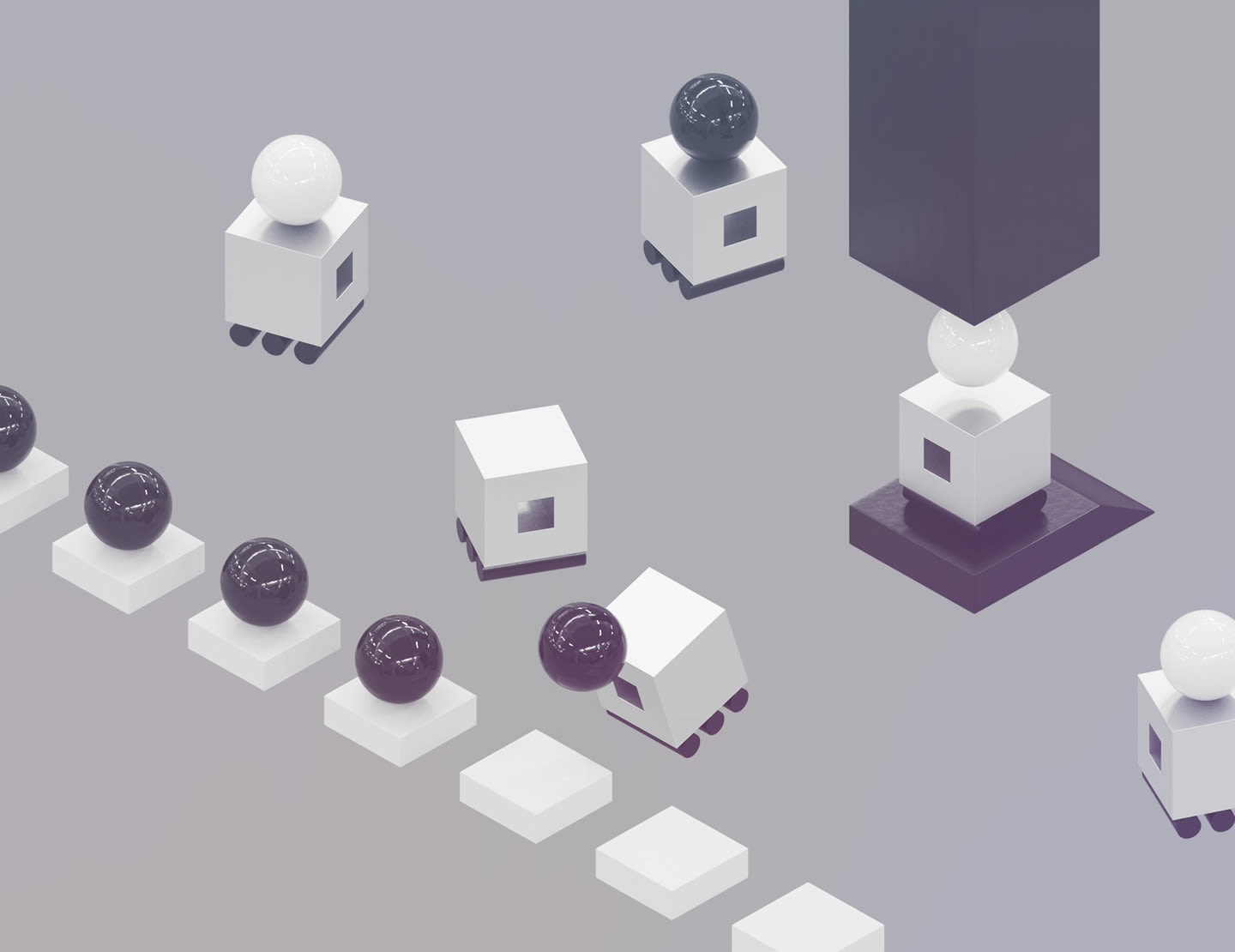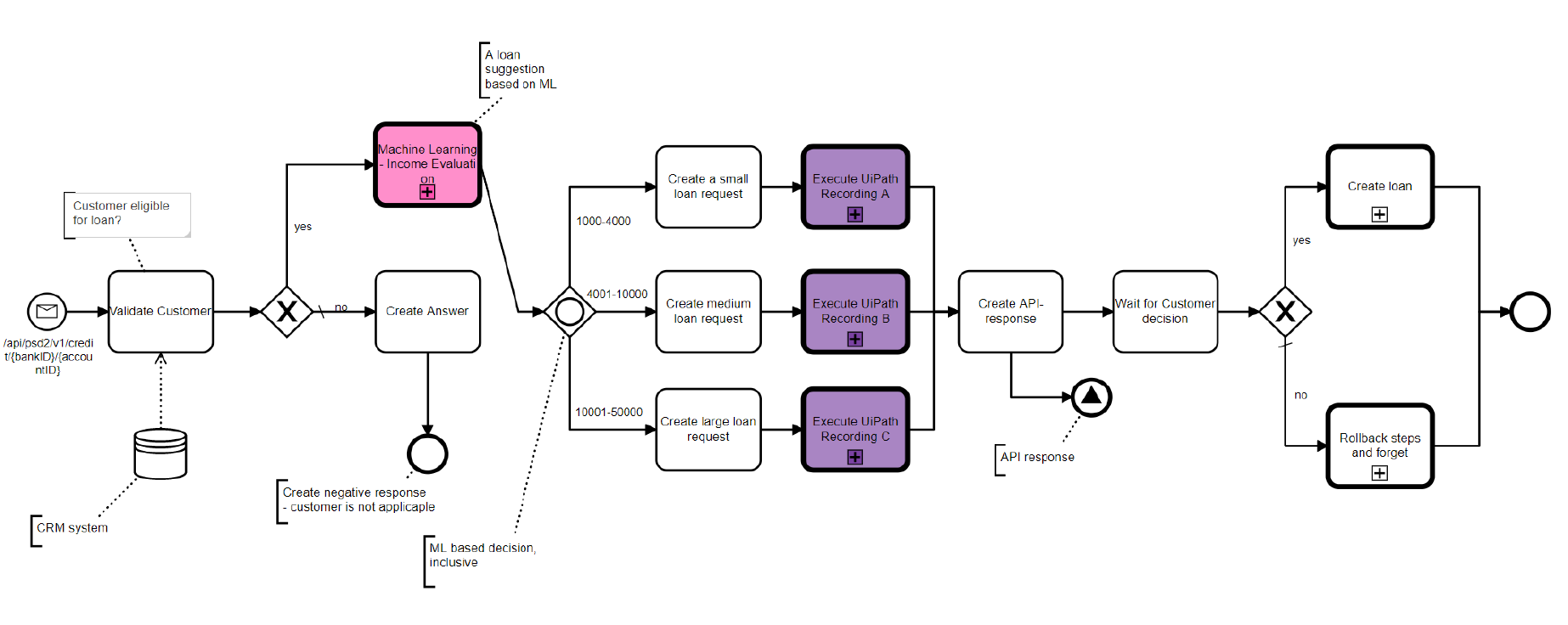What are hyperautomation and hyperautomation platforms?
When robotic process automation (RPA), enterprise application integration (EAI), and artificial intelligence (AI) are put together the result is called hyperautomation.


What is hyperautomation?
Gartner predicts that the number 1 technology trend in 2020 will be hyperautomation. Again in 2021 - Gartner again predicts hyperautomation to be in top 10 technology trends. What is hyperautomation? For example, whereas robotic process automation (RPA) is mostly simulating a person doing a task or a series of tasks, hyperautomation joins Business Process Automation (BPA) and intelligent processes together with RPA and features of an integration platform. Intelligent processes are processes that use, for example, machine learning or other forms of Artificial Intelligence (AI) to make automated decisions.
Hyperautomation is process automation that runs on an automation platform and exists on top of legacy systems and their interfaces. It uses machine learning to make decisions and robotics to simulate persons for those parts where traditional integration is not possible.
What is a hyperautomation platform?
As defined by Gartner, "As no single tool can replace humans, hyperautomation today involves a combination of tools, including robotic process automation (RPA), intelligent business management software (iBPMS) and AI, with a goal of increasingly AI-driven decision making." Traditionally BPMS tools are workflow management platforms that include monitoring of configurable key performance indicators (KPIs). The "i" for intelligence means just ML is used to make automated decisions during workflow executions. Gartner also implies that hyperautomation includes integration capabilities.
At HiQ, we believe that process and workflow automation combined with integration capabilities are the crucial factors to achieve hyperautomation. Pour in some machine learning from Azure ML and spice it up with UiPath capabilities like the recording of human interactions and, for example, optical character recognition (OCR) and voilá - we have a pervasive hyperautomation platform. This combination offers full capabilities enterprise-level integration platform (as-a-service, on-prem, hybrid) like
API hosting and API management
Data mapping
Hundreds of mainstream enterprise application adapters
Support for all relevant standards in transfer protocols or security etc.
Recording user actions (UiPath Studio)
Executing recordings (UiPath Robot)
OCR and all the UiPath's features
All these are available to process automation with unified process language standard BPMN 2.0. It is at the very core of every process automation, API execution, and integration that are developed with frends.
Hyperautomation as a term was introduced by Gartner. Similar concepts are "Intelligent Process Automation" by IDC and "Digital Process Automation" by Forrester.
The following picture is a real screen capture from frends UI. It shows an automated process that includes machine learning-based decision making, workflow automation, and execution of pre-recorded user actions (UiPath). The same standard visual language is used to develop and monitor all the automation, APIs, and integration processes.


frends + UiPath + Azure ML = hyperautomation platform. In 2020 frends has evolved to handle better long-running processes. If the workflows that exist for a few hours are now easily manageable with frends, in the next versions of FRENDS, we add the capability of manage processes running days or months to our repertoire.
By joining frends and UiPath together we can minimize the recording based automation and make it simpler . This way we can cut the number of required robots to half and get rid of the error-prone "if-then-else" decision inside recording based RPA.
Why choose hyperautomation instead of RPA?
Hyperautomated solutions can include Machine Learning based decision making, not just OCR
Hyperautomation is 100 x faster when dealing with large volumes of data or solution requires logic that is based on the datacontent.
Hyperautomation solutions are more robust and you save aproximately 60% in Total Cost of Ownership (TCO)
Hyperautomation needs less expensive; for example a single frends agent can run hundreds of processes concurrently whereas robot can execute only a single process. With frends, you need 50% fewer robots.
Are you interested? Please contact us with the form below.
Webinar recording
Our webinar RPA Evolves to Hyperautomation can be downloaded here:
Hyperautomation in brief: "From RPA to Hyperautomation" (12min)

Antti Toivanen
Frends integrationsAuthor has over 23 years of experience in process automation and integration
About this project
